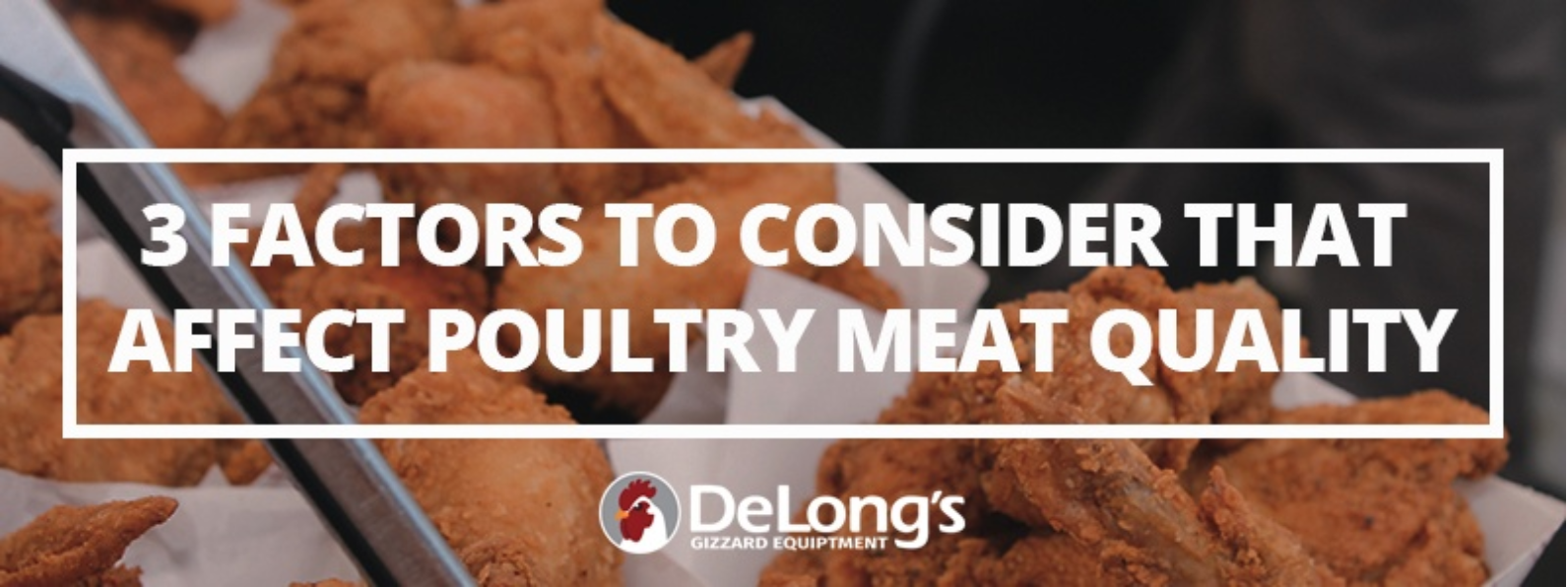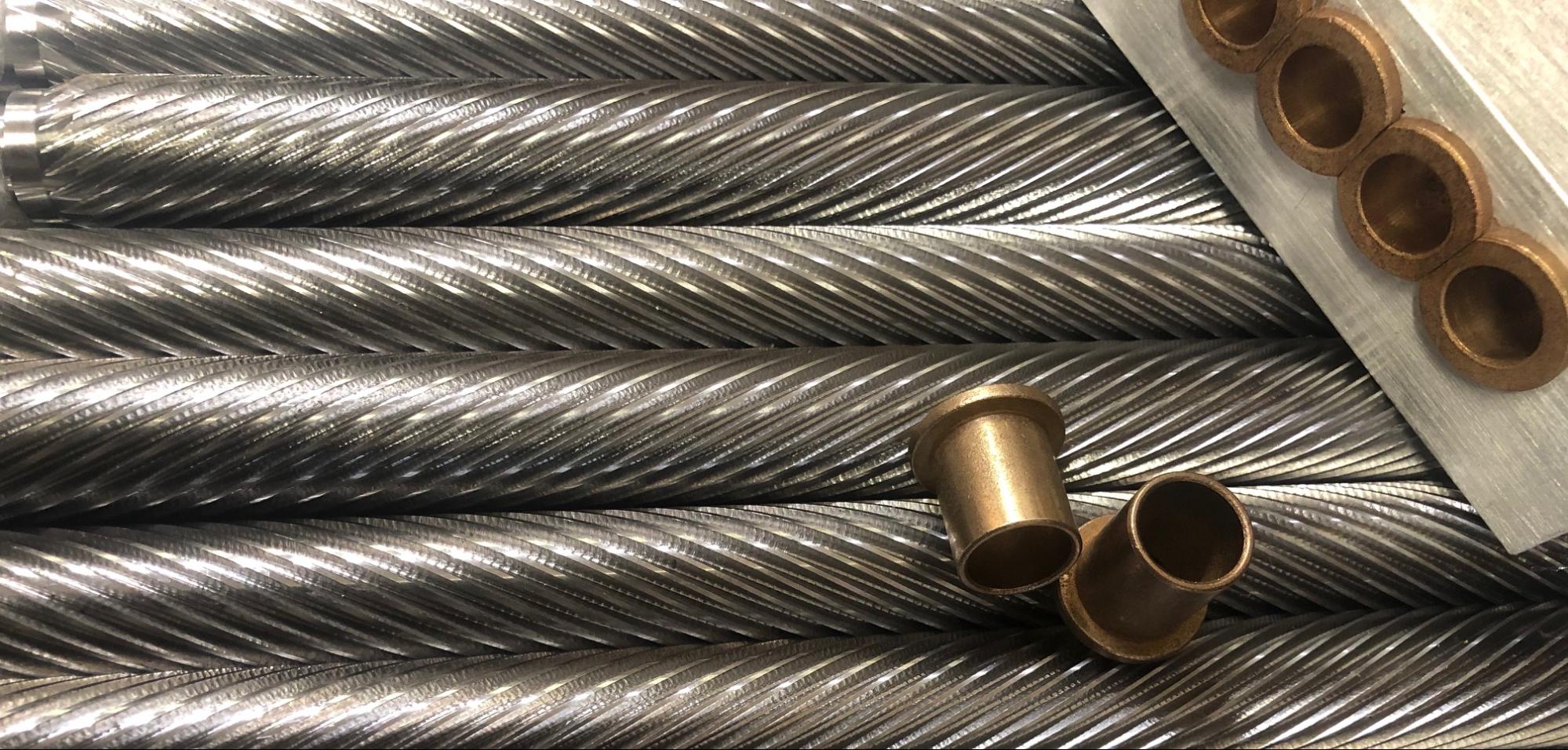
08 Jun 3 Factors To Consider That Affect Poultry Meat Quality
In the realm of poultry processing, there are a number of important factors managers need to consider in order to create the best product possible and attract the most consumers. While qualities such as availability, ease of preparation, and shelf-life are important considerations, ultimately people want to eat high-quality meat that tastes good, and that’s what they’ll buy.
If you want more success for your poultry plant, it’s vital to produce meat that appeals to the consumer’s tastes. Quality may be a subjective concept, but by taking into account how your plant’s processes affect your final product’s quality in the eye of the consumer, you’ll be in a better position to make more sales and run a more successful plant.
The three key factors that impact poultry quality are:
Appearance
In the realm of poultry processing, the appearance of the meat is a critical part of quality assessment. In addition to impacting the customer’s initial decision to buy your poultry, the physical appearance of the final product also has a strong correlation with the customer’s overall product satisfaction (Cambridge).
The color of poultry meat, both cooked and raw, is important because it is one of the factors that customers use to assess its freshness. This presents a unique challenge for poultry processors because, unlike most other common meats, poultry is sold both with and without skin, and is the only species that has dramatic extremes in color throughout (white meat and dark meat).
Generally speaking, raw meat on the breast should be pale pink while meat on the thigh or leg should be a dark red. However, this is not always the case, as coloration can be affected by factors including the age, sex, strain, and diet of the bird, as well as factors that arise from processing such as pre-slaughter conditions (The Department of Poultry Science).
Another problem is the scope of discoloration, which can range from the entire muscle to only a single small bruise or blood vessel. Regardless of the size, noticeable discoloration will turn customers away, so maintaining a consistent and healthy-looking color throughout is vital.
The breast of the broiler, is the biggest point of concern. Breast muscle is very sensitive to factors that contribute to discoloration, and its natural paleness makes any discoloration stick out even more. Unfortunately, the breast also accounts for a relatively-large portion of the broiler’s live weight; if an entire muscle is discolored, chances are high that it’s the breast.
The good news is that time is the best tool for mitigating bruises on broilers. A bruise will stay reddish-purple for roughly the first 24 hours, transitioning into yellow-green over the next 24 hours, then gradually move away from yellow and return to normal flesh color. After 120 hours total, any discoloration should be gone (The Department of Poultry Science).
The bad news is that injuries to broilers that occur in the field can be magnified and worsened by equipment, processing, and handling conditions within your plant. Smart poultry plant managers are increasingly taking steps to give broiler discoloration time to heal, and ensuring that only fit broilers are processed.
Texture
While appearance is the most important factor in making the initial sale, texture is the most important sensory property that consumers use to judge poultry quality (Cambridge). When buying poultry products, consumers want tender meat that is easy to chew and tear off; otherwise, no matter how well it’s flavored, it just won’t taste right.
The texture and tenderness of the final product is dependent on the process of rigor mortis. When any animal dies, its blood stops circulating and its muscles run out of energy, causing them to become stiff. Over time, the muscles will soften again, giving them their tender texture.
Anything that interferes with a broiler’s natural process of rigor mortis will affect the tenderness of the meat. For instance, when a bird struggles before or during slaughter, causing the muscles to tense up and inducing rigor mortis more quickly, the meat is tougher and lower-quality. The same can also happen when birds are exposed to extreme heat or extreme cold before slaughter. Other factors that can impact rigor mortis include high scalding temperatures, longer scalding times, and machine picking (The Department of Poultry Science).
Many managers are looking toward post-slaughter electrical stimulation for the solution. Unlike stress in a live bird, post-mortem electrical stimulation acts as a nerve impulse that can cause the muscles to contract and enter rigor mortis at a faster rate without toughening the meat.
While applying the same technique to a live bird causes the meat to be tough, post-slaughter electrical stimulation can reduce the time it takes to age the broiler before deboning, resulting in a product that not only tastes better, but takes less time to create as well.
Flavor
Flavor is the final aspect that consumers use to judge meat quality. It’s important to note that, when judging flavor, the aroma of the meat is just as important as the physical taste.
The biggest factor impacting the flavor of the bird is its age at slaughter, with birds that are too young having too little meat, and birds that are too old having a worse flavor. Other minor contributors include the bird’s diet, scalding temperatures, and environmental conditions, as well as the strain it experienced during its lifetime and its packaging and storing conditions after processing.
Only a few factors influence a bird’s flavor once it has reached the processing stage. The good news is that a high-quality broiler generally won’t be affected by your plant’s processes and that a defect is unlikely; the bad news is that it is difficult to enhance the flavor of the broiler at this stage (The Department of Poultry Science).
The best step a poultry production manager can take to ensure the best flavor meat is simply to avoid errors in production and processing, such as deboning too early (Cambridge). With proper processes in place, managers can rest assured that their birds will taste great and that consumers will come back for more.
Interested in learning more about what you can do to take your poultry plant to the next level? Download our free informative Ebook, How to Find Effective Poultry Processing Equipment.



